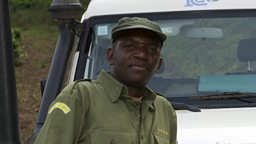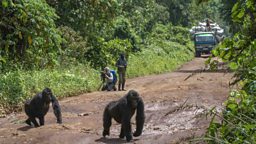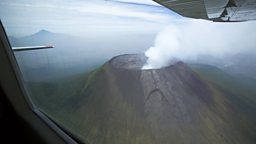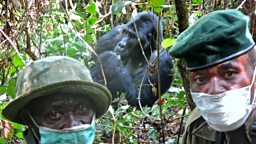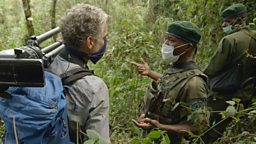Conflict and a peaceful future?
We make reference to the recent conflicts in DRC during both episodes of Gorilla Family & Me, without expanding much on the subject. A number of other 成人快手 articles give more context on the recent conflicts in the region:
year on year, the situation is getting better
The DRC has vast mineral resources – especially of coltan, of which DRC produces around 20% of the world’s supply. This is a dull, black metallic ore from which the elements niobium and tantalum can be extracted to manufacture, amongst other things, tantalum capacitors. These components feature in many common electronic goods such as gaming stations and cell phones. The huge value of the ore has helped fuel instability in the DRC.
Because the 成人快手’s safety advisory teams still classify the area as unsafe, all the film crew had to have specialist hostile environment training before being allowed to go on the shoots. The training covers remote first aid, how to minimise exposure to risk and guidance on how to react to situations that are unique to working in a conflict zone.
Throughout the shoot our fixers and advisers kept us aware of potential unrest. Fortunately for our purposes, there was little trouble locally. On a regional level, elections in the neighbouring country of Burundi, which coincided with our work, have led to unrest which still continues, though this did not impact on our filming.
There were several instances of banditry and shootings in the DRC itself. But none of these episodes were close to our location. Kahuzi-Biega National Park is
well secured, and we witnessed groups of tourists visiting the gorillas on an almost daily basis. Most were people working for NGOs already in the DRC wanting to get their first glimpse of a Grauer’s gorilla. There were a handful of independent tourists from outside as well. The Park hopes that security as well as outside perception of the situation in the region will continue to improve to the point where it returns to its status as one of the best places in the world to see gorillas in the wild, as it was in the 1980s.
It’s still a part of the world that is challenging to visit and work in. But year on year, the situation is getting better. We hope that this trend continues and that in years to come the National Parks of the DRC can enjoy the same sort of attention that parks in Rwanda and Uganda enjoy.

